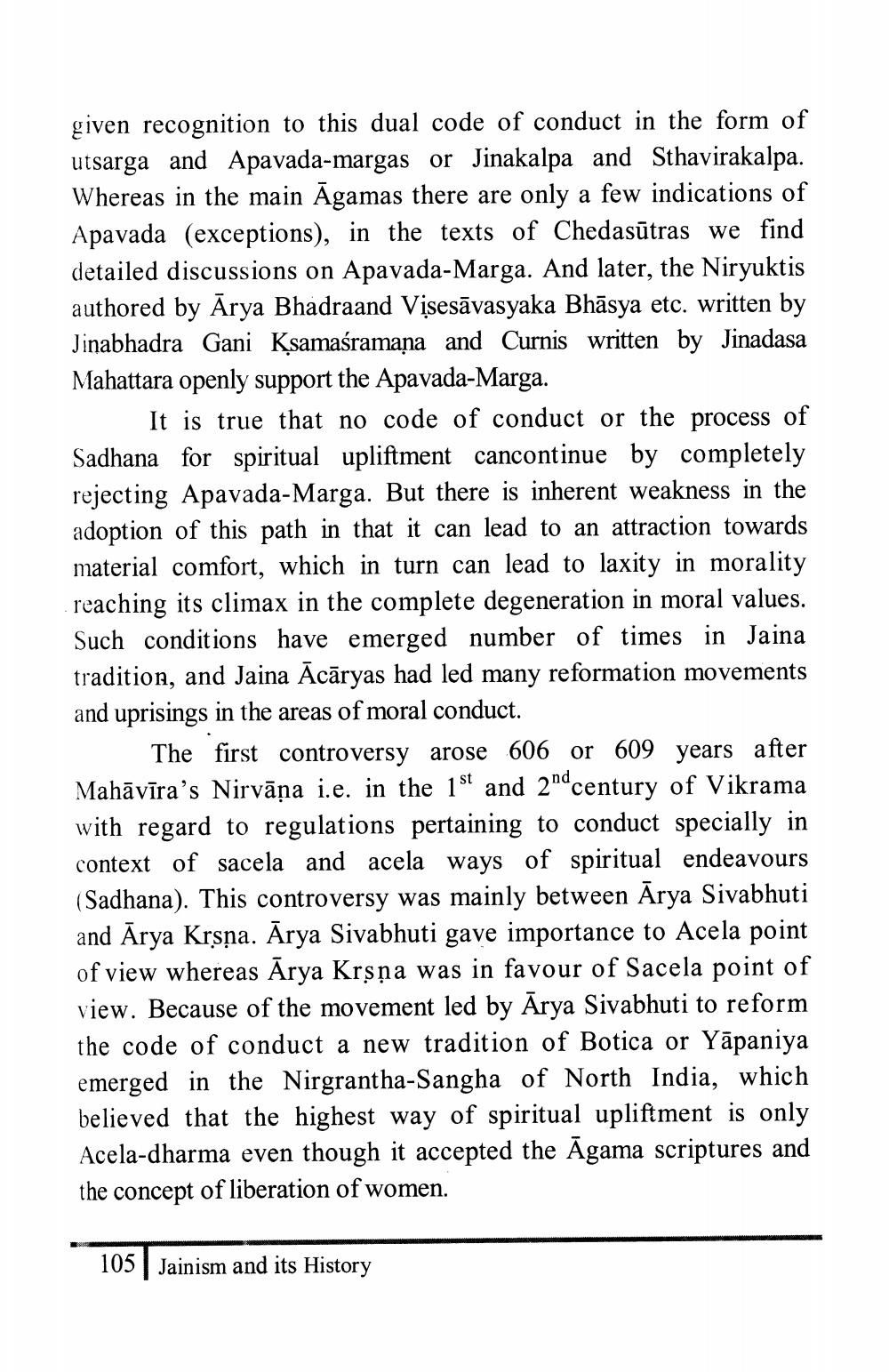________________
given recognition to this dual code of conduct in the form of utsarga and Apavada-margas or Jinakalpa and Sthavirakalpa. Whereas in the main Āgamas there are only a few indications of Apavada (exceptions), in the texts of Chedasūtras we find detailed discussions on Apavada-Marga. And later, the Niryuktis authored by Arya Bhadraand Visesavasyaka Bhasya etc. written by Jinabhadra Gani Ksamaśramana and Curnis written by Jinadasa Mahattara openly support the Apavada-Marga.
It is true that no code of conduct or the process of Sadhana for spiritual upliftment cancontinue by completely rejecting Apavada-Marga. But there is inherent weakness in the adoption of this path in that it can lead to an attraction towards material comfort, which in turn can lead to laxity in morality reaching its climax in the complete degeneration in moral values. Such conditions have emerged number of times in Jaina tradition, and Jaina Acaryas had led many reformation movements and uprisings in the areas of moral conduct.
The first controversy arose 606 or 609 years after Mahāvīra's Nirvana i.e. in the 1st and 2nd century of Vikrama with regard to regulations pertaining to conduct specially in context of sacela and acela ways of spiritual endeavours (Sadhana). This controversy was mainly between Arya Sivabhuti and Arya Kṛṣṇa. Ārya Sivabhuti gave importance to Acela point of view whereas Ārya Krṣṇa was in favour of Sacela point of view. Because of the movement led by Arya Sivabhuti to reform the code of conduct a new tradition of Botica or Yapaniya emerged in the Nirgrantha-Sangha of North India, which believed that the highest way of spiritual upliftment is only Acela-dharma even though it accepted the Agama scriptures and the concept of liberation of women.
105 Jainism and its History




